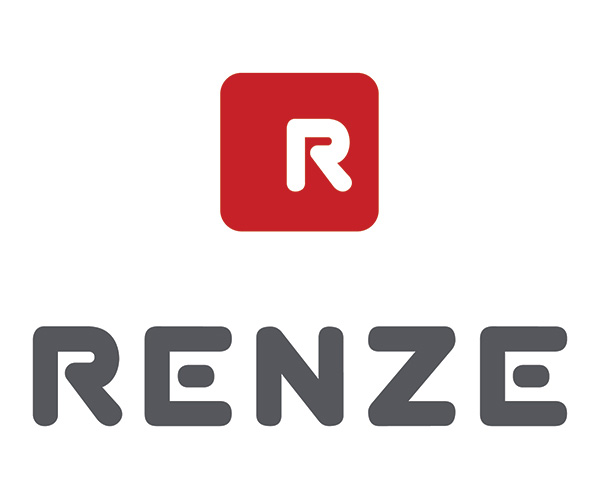Building by building, business by business, the city of Omaha and its economy matured during the 1920s. In 1922, the first commercial radio station debuted. WAAW, 660 on the AM dial began broadcasting from the Grain Exchange Building at 19th and Harney streets. During its four-hour broadcasts, the station announced grain prices, a little live music and interviews with people of note. Commercials weren’t a staple of the two-year old medium.
The Roaring Twenties in Omaha were marked by speakeasies, vaudeville at the Orpheum Theatre, lots of fun and big money. But that would all change in the next decade.
Throughout the 1930s, Omaha like the rest of the country felt the effects of the Great Depression, and Omahans worked to get back on their feet. Real estate men and advertising men like Morris Jacobs and Leo Bozell started to chalk up sales.

Jacobs and Bozell, two former newspapermen, started to gain national prominence in the 1930s. As accounts were added, B&J opened offices in Indianapolis, Chicago, Houston and other cities. One of B&J’s first clients, Father Flanagan’s Boys Town, saw its profile raised, as well, then in 1938 it achieved worldwide recognition in the MGM movie “Boys Town” starring Spencer Tracy.
With the onset of World War II, America, Omaha and the advertising industry seemed to speed up on their course to the modern era. “Truth in advertising” became an industry goal and was supported by the Better Business Bureau, which came to Omaha in 1936 thanks to efforts of the Associated Retailers of Omaha and the Ad Club.
 As the nation switched from peacetime to wartime operations, cities got involved. The World-Herald led a national campaign that resulted in the collection of thousands of tons of scrap metal. Men and women reported each morning to the big Martin Bomber plant in Fort Crook to help build B-26 Marauders and B-29 Bombers, and do their bit for the war effort. Omahans by the thousands labored around the clock inside the city’s giant food processing plants to feed people across America and many foreign lands. Like their compatriots across the country, Omahans purchased War Bonds, planted Victory Gardens and counted their ration stamps.
As the nation switched from peacetime to wartime operations, cities got involved. The World-Herald led a national campaign that resulted in the collection of thousands of tons of scrap metal. Men and women reported each morning to the big Martin Bomber plant in Fort Crook to help build B-26 Marauders and B-29 Bombers, and do their bit for the war effort. Omahans by the thousands labored around the clock inside the city’s giant food processing plants to feed people across America and many foreign lands. Like their compatriots across the country, Omahans purchased War Bonds, planted Victory Gardens and counted their ration stamps.

Even as Hitler ravaged Europe, Omaha and its people still found ways to celebrate. The Golden Spike Days festivities in April of 1939 lasted a whole week, with 250,000 people packing the streets. The occasion marked the 70th anniversary of the completion of the transcontinental railroad and was timed to concur with the world premiere of the movie “Union Pacific” directed by Cecil B. DeMille.
After the war, the world was different. Advertising and the Omaha Ad Club started to diversify. Not only did an important new medium – television – enter the ad arena, women also started to make their presence known in the industry, both locally and nationally. In the last half of the 1940s, club leaders began inviting women as guests to the regular club dinner meetings held in the Castle Hotel on south 16th Street. After surviving that dry run, the club admitted women as members in 1947.
The Television Age dawned. In Omaha WOW aired the first broadcast on August 29, 1949; KMTV quickly followed suit on September 1. Most TV commercials of the time were delivered live. Retail stores and ad agency writers, accustomed to writing for print and radio, struggled with the new medium.
Despite all the changes, the Omaha Advertising Club was still in business gathering throughout the city for meetings, programs and events.
AAF Omaha Meeting Places
So where have ad club members met and gathered over the years? Maybe the better question is where didn’t they get together? This list is some, but certainly not all of the locations where AAF Omaha members have gathered for monthly luncheons and professional development programs throughout the past 114 years:
Fontenelle Hotel, 18th & Douglas
Rome Hotel, 16th & Jackson
Castle Hotel, 16th & Jones
The Field Club of Omaha, 36th & Woolworth
Woodmen of the World, 14th & Farnam
Ross Nisi’s, 72nd & Howard
Peony Park, 78th & Cass
The Town House, 71st & Dodge
Blackstone Hotel, 36th & Farnam
The New Tower, 78th & Dodge
Tico’s, 71st & Howard
Anthony’s, 72nd & F
The Venice Inn, 72nd & Pacific
SAC Headquarters Officer’s Club, Bellevue
Marriott Regency Hotel, Regency Circle
Ramada Inn Central, 72nd & Grover
The Red Lion Hotel, 16th & Dodge
Park Inn Regency Lodge, 107th and Pacific
Schimel’s Indian Hills Inn, 85th & Dodge
Swanson, “The Presidents Room”, 60th & Grover
Holiday Inn Central, 72nd and Grover
DJs Dugout
Scott Conference Center, Aksarben Village
Paxton Hotel, 14th & Farnam
The Living Room, Mastercraft Building, 11th and Izard
Beacon Hills in Aksarben Village
Article submitted by: Teri Hamburger with information collected for OFA’s (now AAF Omaha) 100th Year Anniversary in 2006 thanks to Larry McNichols, whose “Brief History of the Omaha Federation of Advertising” provided much of the historical information in this article. McNichols played an active role in the Omaha area advertising industry throughout the 1950s, 60s, 70s and 80s. McNichols, who headed Century III Advertising, Inc., also served as OFA President in 1975-76, AAF 9th District Governor in 1980-81 and is an active AAF Omaha lifetime member.



